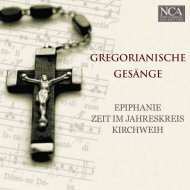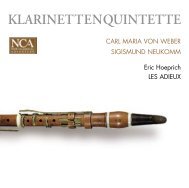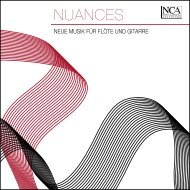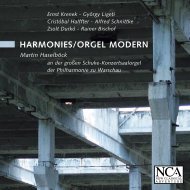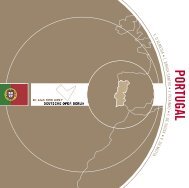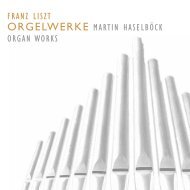FRANZ LISZT - nca - new classical adventure
FRANZ LISZT - nca - new classical adventure
FRANZ LISZT - nca - new classical adventure
You also want an ePaper? Increase the reach of your titles
YUMPU automatically turns print PDFs into web optimized ePapers that Google loves.
Dante Alighieri (ca 1265-1321), written about 1307<br />
and completed shortly before his death, is not only<br />
one of the most important literary monuments, the<br />
first extensive poetical work in the Italian language,<br />
but also still counts today as one of, if not the,<br />
supreme work of Italian literature, and at the same<br />
time as one of the most significant achievements in<br />
the whole of world literature.<br />
In “The Divine Comedy” Dante gives a first-person<br />
account of travels through the after-life. The<br />
journey is necessary “because I had lost the right<br />
road”. It serves as purification and, since Dante’s<br />
living “I” figure is accorded access to the world of<br />
the dead, is a great honour. With the Roman poet<br />
36 37<br />
Vergil as his leader Dante must first pass through<br />
Hell (Inferno), starting out from limbo, where the<br />
original sinners, the unbaptised infants, and the<br />
poets and philosophers of antiquity sojourn, thence<br />
to the Hell of the damned, where Lucifer crunches<br />
the three arch-traitors Judas, Brutus and Cassius<br />
between his teeth. Then Dante and Vergil reach<br />
the second realm of the underworld, Purgatory.<br />
Here at the foot of the mountain they find the<br />
dead who are guilty of the most heinous misdeeds,<br />
and the higher the two travellers climb the more<br />
noble are the figures they meet by the wayside. At<br />
the summit, Beatrice, an angelic, idealised female<br />
figure becomes Dante’s guide. With her, Dante<br />
ascends into Paradise, where he is finally permitted<br />
to fathom the Trinity and God himself.<br />
The entire spiritual cosmos of late mediaeval<br />
times is to be found in “The Divine Comedy”.<br />
Dante’s after-life is populated by mythical figures,<br />
artists, sages and other historical personages from<br />
contemporary Florence, known today only from<br />
Dante’s poem.<br />
Formally, “The Divine Comedy” is imbued<br />
throughout with a wealth of harmonious con-<br />
centration. Following an introductory cantus,<br />
each of the regions Hell, Purgatory and Paradise<br />
are passed through in 33 canti. Each of the realms<br />
of the afterlife is subdivided into nine steps.<br />
Throughout Dante uses the verse form of three<br />
lines, the terza rima, whereby the lines of eleven<br />
syllables are linked from verse to verse by an<br />
interlocking rhyming scheme.<br />
Franz Liszt was familiar with “The Divine Comedy”<br />
from his Paris years. During his travels in Italy at<br />
the end of the 1830s he and his lover and “muse”,<br />
Marie d’Agoult, had seized the opportunity to<br />
engage in intensive study Dante’s poetry of and that<br />
of Petrarch. Soon afterwards the first sketches for<br />
a piano work, the “Dante Sonata”, emerged which<br />
although first published in 1861, was virtually in<br />
its final version by 1849; but even as early as 1847<br />
Liszt had already noted down his first ideas for a<br />
symphony based on the Commedia.<br />
During his Weimar days, in 1855, immediately<br />
following the completion of the first version of<br />
the “Faust Symphony”, Liszt set to work on the<br />
composition of the “Dante Symphony”, which was<br />
finished by 1856. The composer’s original intention<br />
had been to write music inspired by Bonaventura<br />
Genelli’s Dante illustrations, a series of line<br />
drawings he had created between 1840 and 1846.<br />
These were to have been projected onto a screen<br />
by means of the <strong>new</strong>ly invented diorama, but this<br />
novel idea, just like the plan to construct a wind<br />
machine for the Inferno section of the symphony,<br />
was abandoned.<br />
In 1857 the work was given a disastrous reception<br />
in Dresden, largely as a result of being too little<br />
rehearsed, though it gradually won acceptance. In<br />
1859 Liszt also arranged the work for two pianos.<br />
In contrast to the one-movement “Dante Sonata”,<br />
the symphony is planned in several movements.<br />
It may have been part of Liszt’s original intention<br />
to devote one movement to each of the three<br />
parts of Dante’s poem. Wagner, with whom<br />
Liszt corresponded about his project, advised<br />
him against a Paradise section, claiming that it<br />
was neither within human capability nor that of<br />
music to imagine or portray the glory of heaven.<br />
Just how far Liszt heeded Wagner’s objections<br />
must remain a mystery. In the version that finally<br />
appeared the symphony has only two movements.<br />
Dante’s Paradiso is represented by a Magnificat<br />
that follows the Purgatorio without a break and<br />
is sung by women’s or boys’ voices. The Magnificat<br />
does not describe the joys of Paradise, but allows<br />
an impression to be formed from a distance. At any<br />
rate by integrating the human voice, which makes<br />
the qualitative leap to Paradise plausible also for<br />
the hearer, Liszt succeeded in a clever counter<br />
move to that argument of Wagner’s, to whom, as<br />
the score shows, this work is dedicated.<br />
english





